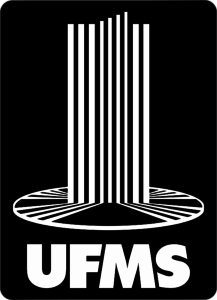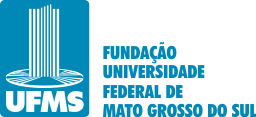Use este identificador para citar ou linkar para este item:
https://repositorio.ufms.br/handle/123456789/8001Registro completo de metadados
| Campo DC | Valor | Idioma |
|---|---|---|
| dc.creator | ANA CLAUDIA CARVALHO MALHEIRO | - |
| dc.date.accessioned | 2023-12-06T20:35:21Z | - |
| dc.date.available | 2023-12-06T20:35:21Z | - |
| dc.date.issued | 2023 | pt_BR |
| dc.identifier.uri | https://repositorio.ufms.br/handle/123456789/8001 | - |
| dc.description.abstract | The study of the floristics and phytosociology of a location allows documenting its plant diversity and provides information on the structure of the community, which provides support for decision-making on the best management of forest resources. However, there is little information regarding the representativeness of a floristic and phytosociological survey with different sizes of sampling units. Therefore, the present work aimed to evaluate the efficiency of different sizes of sampling units, in the floristic and phytosociological survey of an Ecological Park, located in Chapadão do Sul – MS. An inventory was carried out through a census of tree and shrub individuals in the area and also through random sampling with four sample unit sizes (10 x 10 m, 10 x 20 m, 20 x 20 m, 20 x 30 m). Circumference measurements at chest height were taken from the individuals and the species was identified. The phytosociological parameters of relative density, frequency and dominance were calculated, which together make up the Importance Value. The phytosiciological parameters of the populations were compared between the different plot sizes in relation to parameters obtained in the census. As the area of the sampling unit increased, the representativeness of the floristics and vegetation structure of the study area increased. The larger sampling unit (20 x 30 m) demonstrated greater species richness and greater representation of the phytosociology of the area, being similar to the census | - |
| dc.language.iso | pt_BR | pt_BR |
| dc.publisher | Fundação Universidade Federal de Mato Grosso do Sul | pt_BR |
| dc.rights | Acesso Aberto | pt_BR |
| dc.subject | amostragem | - |
| dc.subject | inventário florestal | - |
| dc.subject | valor de importância | - |
| dc.subject | censo florestal | - |
| dc.subject | diversidade florística. | - |
| dc.subject.classification | Ciências Agrárias | pt_BR |
| dc.title | EFEITO DO TAMANHO DA UNIDADE DE AMOSTRA NA REPRESENTATIVIDADE FLORÍSTICA E FITOSSOCIOLÓGICA DE UM PARQUE ECOLÓGICO EM CHAPADÃO DO SUL/MS | pt_BR |
| dc.type | Trabalho de Conclusão de Curso | pt_BR |
| dc.contributor.advisor1 | GLAUCE TAIS DE OLIVEIRA SOUSA AZEVEDO | - |
| dc.description.resumo | O estudo da florística e fitossociologia de um local permite documentar sua diversidade vegetal e fornece informações sobre a estrutura da comunidade, o que fornece subsídios para tomada de decisões sobre o melhor gerenciamento dos recursos florestais. No entanto, existe pouca informação a respeito da representatividade de um levantamento florístico e fitossociológico com diferentes tamanhos de unidades de amostra. Portanto, o presente trabalho teve como objetivo avaliar a eficiência de diferentes tamanhos de unidades de amostra, no levantamento florístico e fitossociológico de um Parque Ecológico, localizado em Chapadão do Sul – MS. Foi realizado inventário através do censo dos indivíduos arbóreos e arbustivos da área e também da amostragem aleatória com quatro tamanhos de unidades de amostra (10 x 10 m, 10 x 20 m, 20 x 20 m, 20 x 30 m). Dos indivíduos foram tomadas medidas de circunferências a altura do peito e identificadas as espécies. Foram calculados os parâmetros fitossociológicos de densidade, frequência e dominância relativas, que juntos compõem o Valor de Importância. Os parâmetros fitossiciológicos das populações, foram comparados entre os diferentes tamanhos de parcelas em relação a parâmetros obtidos no censo. A medida em que se aumentou a área da unidade de amostra, houve o aumento da representatividade da florística e da estrutura da vegetação da área de estudo. A unidade amostral de maior dimensão (20 x 30 m) demonstrou maior riqueza de espécies e maior representação da fitossociologia da área, sendo semelhante ao censo. | pt_BR |
| dc.publisher.country | null | pt_BR |
| dc.publisher.initials | UFMS | pt_BR |
| Aparece nas coleções: | Engenharia Florestal - Bacharelado (CPCS) | |
Arquivos associados a este item:
| Arquivo | Tamanho | Formato | |
|---|---|---|---|
| 6347.pdf | 906,21 kB | Adobe PDF | Visualizar/Abrir |
Os itens no repositório estão protegidos por copyright, com todos os direitos reservados, salvo quando é indicado o contrário.

